Hyundai i10 II (IA)
Subcompact HatchbackProduct Gallery
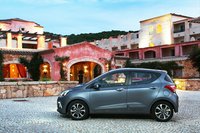
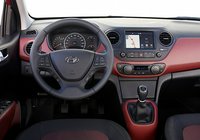
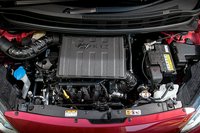
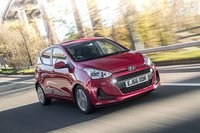
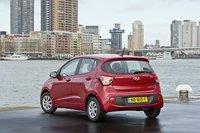
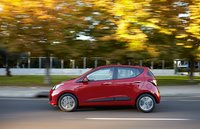
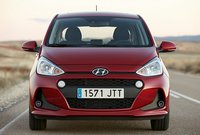
Product Overview
Hyundai i10 II (chassis code IA) is an entry-level subcompact hatchback in production from 2013 to 2019. It was available with a range of inline-3 and inline-4 engines that displaced 1.0 to 1.2 liters.
Compared to the Mk1 i10, the Mk2 model has a more up-to-date design. Unfortunately, the vehicle is mechanically rather similar to the original i10, which means that it is about a decade (if not more) behind the norm in terms of power.
One plus is the small 9.6m (31.5ft) turning circle.
Ratings
What we found
Neofiliac score 5%
Pros
- Much improved styling
- Small turning circle
Cons
- Horrible 0-100kph time
- Can't even reach 200km/h
- Miserably low engine output
- Only available with tiny engines
- No independent rear suspensions
- Poor transmissions
What external reviewers found
External score 69%
Pros
- Good value
- Great practicality
- Decent infotainment system
- Good standard equipment
- Comfortable to drive
Cons
- Lack of safety features
- Lacks driver-seat height adjustment
- Lack of petrol engines
Your rating:
12345678910
?/10
Price Comparison
As associates of the merchants above, we earn a commission when you make a purchase using the supplied links.
Specifications
Variants shown:
1.0
1.0 AT
1.0 LPG
1.25
1.25 AT
[[{"Ft":"Capacity","Fn":"Cargo Capacity","Fv":"252 L / 8.9 cu-ft ~ 1046 L / 36.9 cu-ft"},{"Ft":"Capacity","Fn":"Fuel Capacity","Fv":"40.0 L / 10.6 gal"},{"Ft":"Capacity","Fn":"Passengers","Fv":"5"},{"Ft":"Capacity","Fn":"Payload","Fv":"487 kg / 1074 lbs"},{"Ft":"Chassis","Fn":"Brakes | Front","Fv":"Ventilated discs"},{"Ft":"Chassis","Fn":"Brakes | Rear","Fv":"Disc"},{"Ft":"Chassis","Fn":"Power Steering","Fv":"Electric Steering"},{"Ft":"Chassis","Fn":"Suspension | Front","Fv":"MacPherson strut"},{"Ft":"Chassis","Fn":"Suspension | Rear","Fv":"Semi-independent, Torsion beam"},{"Ft":"Chassis","Fn":"Tire Size","Fv":"155/70 R13, 175/65 R14, 185/55 R15"},{"Ft":"Chassis","Fn":"Turning Circle","Fv":"9.6 m / 31.5 ft"},{"Ft":"Construction","Fn":"Body Style","Fv":"5-door Hatchback"},{"Ft":"Dimensions","Fn":"Size | Height","Fv":"1500 mm / 59.1 in"},{"Ft":"Dimensions","Fn":"Size | Length","Fv":"3665 mm / 144.3 in"},{"Ft":"Dimensions","Fn":"Size | Width","Fv":"1660 mm / 65.4 in"},{"Ft":"Dimensions","Fn":"Track Width | Front","Fv":"1491.0 mm / 58.7 in"},{"Ft":"Dimensions","Fn":"Track Width | Rear","Fv":"1504.0 mm / 59.2 in"},{"Ft":"Dimensions","Fn":"Weight","Fv":"933.0 kg / 2056.9 lbs"},{"Ft":"Dimensions","Fn":"Wheel Size","Fv":"4.5J x 13, 5.5J x 14, 5.5J x 14, 6.0J x 15"},{"Ft":"Dimensions","Fn":"Wheelbase","Fv":"2385 mm / 93.9 in"},{"Ft":"Performance","Fn":"Acceleration | 0 - 100 km/h","Fv":"14.9 sec"},{"Ft":"Performance","Fn":"Acceleration | 0 - 60 mph","Fv":"14.2 sec"},{"Ft":"Performance","Fn":"CO2 Emission","Fv":"108 g/km"},{"Ft":"Performance","Fn":"Fuel Economy","Fv":"4.7 L/100km / 50.0 MPG (combined) | 6.0 L/100km / 39.2 MPG (urban) | 4.0 L/100km / 58.8 MPG (highway)"},{"Ft":"Performance","Fn":"Top Speed","Fv":"155.0 km/h / 96.3 mph"},{"Ft":"Powertrain","Fn":"Drivetrain Layout","Fv":"Front-engine (transverse), Front-wheel drive"},{"Ft":"Powertrain","Fn":"Emission Standard","Fv":"Euro 5"},{"Ft":"Powertrain","Fn":"Engine | Bore","Fv":"71.0 mm / 2.8 in"},{"Ft":"Powertrain","Fn":"Engine | Compression Ratio","Fv":"10.5:1"},{"Ft":"Powertrain","Fn":"Engine | Displacement","Fv":"1.0 L / 60.9 cu-in / 998.0 cc"},{"Ft":"Powertrain","Fn":"Engine | Power","Fv":"67.0 hp / 50.0 kW @ 5500 rpm"},{"Ft":"Powertrain","Fn":"Engine | Specific Output","Fv":"67.1 hp/L / 1.1 hp/cu-in"},{"Ft":"Powertrain","Fn":"Engine | Stroke","Fv":"84.0 mm / 3.3 in"},{"Ft":"Powertrain","Fn":"Engine | Torque","Fv":"95 Nm / 70.1 lb-ft @ 5500 rpm"},{"Ft":"Powertrain","Fn":"Engine | Type","Fv":"Naturally-aspirated multi-port injected petrol inline-3 DOHC engine with 4 values per cylinder"},{"Ft":"Powertrain","Fn":"Transmission | Gears","Fv":"5-speed"},{"Ft":"Powertrain","Fn":"Transmission | Type","Fv":"Manual"},{"Ft":"Production","Fn":"Availability","Fv":"2013 ~ 2016"}],[{"Ft":"Capacity","Fn":"Cargo Capacity","Fv":"252 L / 8.9 cu-ft ~ 1046 L / 36.9 cu-ft"},{"Ft":"Capacity","Fn":"Fuel Capacity","Fv":"40.0 L / 10.6 gal"},{"Ft":"Capacity","Fn":"Passengers","Fv":"5"},{"Ft":"Capacity","Fn":"Payload","Fv":"488 kg / 1076 lbs"},{"Ft":"Chassis","Fn":"Brakes | Front","Fv":"Ventilated discs"},{"Ft":"Chassis","Fn":"Brakes | Rear","Fv":"Disc"},{"Ft":"Chassis","Fn":"Power Steering","Fv":"Electric Steering"},{"Ft":"Chassis","Fn":"Suspension | Front","Fv":"MacPherson strut"},{"Ft":"Chassis","Fn":"Suspension | Rear","Fv":"Semi-independent, Torsion beam"},{"Ft":"Chassis","Fn":"Tire Size","Fv":"155/70 R13, 175/65 R14, 185/55 R15"},{"Ft":"Chassis","Fn":"Turning Circle","Fv":"9.6 m / 31.5 ft"},{"Ft":"Construction","Fn":"Body Style","Fv":"5-door Hatchback"},{"Ft":"Dimensions","Fn":"Size | Height","Fv":"1500 mm / 59.1 in"},{"Ft":"Dimensions","Fn":"Size | Length","Fv":"3665 mm / 144.3 in"},{"Ft":"Dimensions","Fn":"Size | Width","Fv":"1660 mm / 65.4 in"},{"Ft":"Dimensions","Fn":"Track Width | Front","Fv":"1491.0 mm / 58.7 in"},{"Ft":"Dimensions","Fn":"Track Width | Rear","Fv":"1504.0 mm / 59.2 in"},{"Ft":"Dimensions","Fn":"Weight","Fv":"952.0 kg / 2098.8 lbs"},{"Ft":"Dimensions","Fn":"Wheel Size","Fv":"4.5J x 13, 5.5J x 14, 5.5J x 14, 6.0J x 15"},{"Ft":"Dimensions","Fn":"Wheelbase","Fv":"2385 mm / 93.9 in"},{"Ft":"Performance","Fn":"Acceleration | 0 - 100 km/h","Fv":"16.8 sec"},{"Ft":"Performance","Fn":"Acceleration | 0 - 60 mph","Fv":"16.0 sec"},{"Ft":"Performance","Fn":"CO2 Emission","Fv":"137 g/km"},{"Ft":"Performance","Fn":"Fuel Economy","Fv":"6.0 L/100km / 39.2 MPG (combined) | 7.5 L/100km / 31.4 MPG (urban) | 5.0 L/100km / 47.0 MPG (highway)"},{"Ft":"Performance","Fn":"Top Speed","Fv":"145.0 km/h / 90.1 mph"},{"Ft":"Powertrain","Fn":"Drivetrain Layout","Fv":"Front-engine (transverse), Front-wheel drive"},{"Ft":"Powertrain","Fn":"Emission Standard","Fv":"Euro 5"},{"Ft":"Powertrain","Fn":"Engine | Bore","Fv":"71.0 mm / 2.8 in"},{"Ft":"Powertrain","Fn":"Engine | Compression Ratio","Fv":"10.5:1"},{"Ft":"Powertrain","Fn":"Engine | Displacement","Fv":"1.0 L / 60.9 cu-in / 998.0 cc"},{"Ft":"Powertrain","Fn":"Engine | Power","Fv":"67.0 hp / 50.0 kW @ 5500 rpm"},{"Ft":"Powertrain","Fn":"Engine | Specific Output","Fv":"67.1 hp/L / 1.1 hp/cu-in"},{"Ft":"Powertrain","Fn":"Engine | Stroke","Fv":"84.0 mm / 3.3 in"},{"Ft":"Powertrain","Fn":"Engine | Torque","Fv":"95 Nm / 70.1 lb-ft @ 5500 rpm"},{"Ft":"Powertrain","Fn":"Engine | Type","Fv":"Naturally-aspirated multi-port injected petrol inline-3 DOHC engine with 4 values per cylinder"},{"Ft":"Powertrain","Fn":"Transmission | Gears","Fv":"4-speed"},{"Ft":"Powertrain","Fn":"Transmission | Type","Fv":"Automatic"},{"Ft":"Production","Fn":"Availability","Fv":"2013 ~ 2016"}],[{"Ft":"Capacity","Fn":"Cargo Capacity","Fv":"252 L / 8.9 cu-ft ~ 1046 L / 36.9 cu-ft"},{"Ft":"Capacity","Fn":"Fuel Capacity","Fv":"40.0 L / 10.6 gal"},{"Ft":"Capacity","Fn":"Passengers","Fv":"5"},{"Ft":"Capacity","Fn":"Payload","Fv":"481 kg / 1060 lbs"},{"Ft":"Chassis","Fn":"Brakes | Front","Fv":"Ventilated discs"},{"Ft":"Chassis","Fn":"Brakes | Rear","Fv":"Disc"},{"Ft":"Chassis","Fn":"Power Steering","Fv":"Electric Steering"},{"Ft":"Chassis","Fn":"Suspension | Front","Fv":"MacPherson strut"},{"Ft":"Chassis","Fn":"Suspension | Rear","Fv":"Semi-independent, Torsion beam"},{"Ft":"Chassis","Fn":"Tire Size","Fv":"155/70 R13, 175/65 R14, 185/55 R15"},{"Ft":"Chassis","Fn":"Turning Circle","Fv":"9.6 m / 31.5 ft"},{"Ft":"Construction","Fn":"Body Style","Fv":"5-door Hatchback"},{"Ft":"Dimensions","Fn":"Size | Height","Fv":"1500 mm / 59.1 in"},{"Ft":"Dimensions","Fn":"Size | Length","Fv":"3665 mm / 144.3 in"},{"Ft":"Dimensions","Fn":"Size | Width","Fv":"1660 mm / 65.4 in"},{"Ft":"Dimensions","Fn":"Track Width | Front","Fv":"1491.0 mm / 58.7 in"},{"Ft":"Dimensions","Fn":"Track Width | Rear","Fv":"1504.0 mm / 59.2 in"},{"Ft":"Dimensions","Fn":"Weight","Fv":"989.0 kg / 2180.4 lbs"},{"Ft":"Dimensions","Fn":"Wheel Size","Fv":"4.5J x 13, 5.5J x 14, 5.5J x 14, 6.0J x 15"},{"Ft":"Dimensions","Fn":"Wheelbase","Fv":"2385 mm / 93.9 in"},{"Ft":"Performance","Fn":"Acceleration | 0 - 100 km/h","Fv":"15.2 sec"},{"Ft":"Performance","Fn":"Acceleration | 0 - 60 mph","Fv":"14.4 sec"},{"Ft":"Performance","Fn":"CO2 Emission","Fv":"98 g/km"},{"Ft":"Performance","Fn":"Fuel Economy","Fv":"4.3 L/100km / 54.7 MPG (combined) | 5.1 L/100km / 46.1 MPG (urban) | 3.7 L/100km / 63.6 MPG (highway)"},{"Ft":"Performance","Fn":"Top Speed","Fv":"153.0 km/h / 95.1 mph"},{"Ft":"Powertrain","Fn":"Drivetrain Layout","Fv":"Front-engine (transverse), Front-wheel drive"},{"Ft":"Powertrain","Fn":"Emission Standard","Fv":"Euro 5"},{"Ft":"Powertrain","Fn":"Engine | Bore","Fv":"71.0 mm / 2.8 in"},{"Ft":"Powertrain","Fn":"Engine | Compression Ratio","Fv":"10.5:1"},{"Ft":"Powertrain","Fn":"Engine | Displacement","Fv":"1.0 L / 60.9 cu-in / 998.0 cc"},{"Ft":"Powertrain","Fn":"Engine | Power","Fv":"67.0 hp / 50.0 kW @ 5500 rpm"},{"Ft":"Powertrain","Fn":"Engine | Specific Output","Fv":"67.1 hp/L / 1.1 hp/cu-in"},{"Ft":"Powertrain","Fn":"Engine | Stroke","Fv":"84.0 mm / 3.3 in"},{"Ft":"Powertrain","Fn":"Engine | Torque","Fv":"95 Nm / 70.1 lb-ft @ 5500 rpm"},{"Ft":"Powertrain","Fn":"Engine | Type","Fv":"Naturally-aspirated multi-port injected petrol inline-3 DOHC engine with 4 values per cylinder"},{"Ft":"Powertrain","Fn":"Transmission | Gears","Fv":"5-speed"},{"Ft":"Powertrain","Fn":"Transmission | Type","Fv":"Manual"},{"Ft":"Production","Fn":"Availability","Fv":"2013 ~ 2016"}]]
External Reviews
autoexpress[1]
Reviewer score 72% (normalized by Neofiliac)The Hyundai i10 is the company's smallest model, and is a great example of a car that makes you question whether you need anything bigger. It doesn't have the outright style of some rivals, but the i10 offers great practicality and value for not a lot of money. The original i10 of 2008 was a big success for Hyundai, especially in the UK, which accounted for over a third of the 110,000 sales the city car notched up in Europe in the six years it was available.
Pros
- Great practicality
- Decent infotainment system
- Good value
Cons
- Lack of petrol engines
Also Check
References
- ^ Used Hyundai i10 (Mk2, 2014-2019) review. [autoexpress].
<
>
x